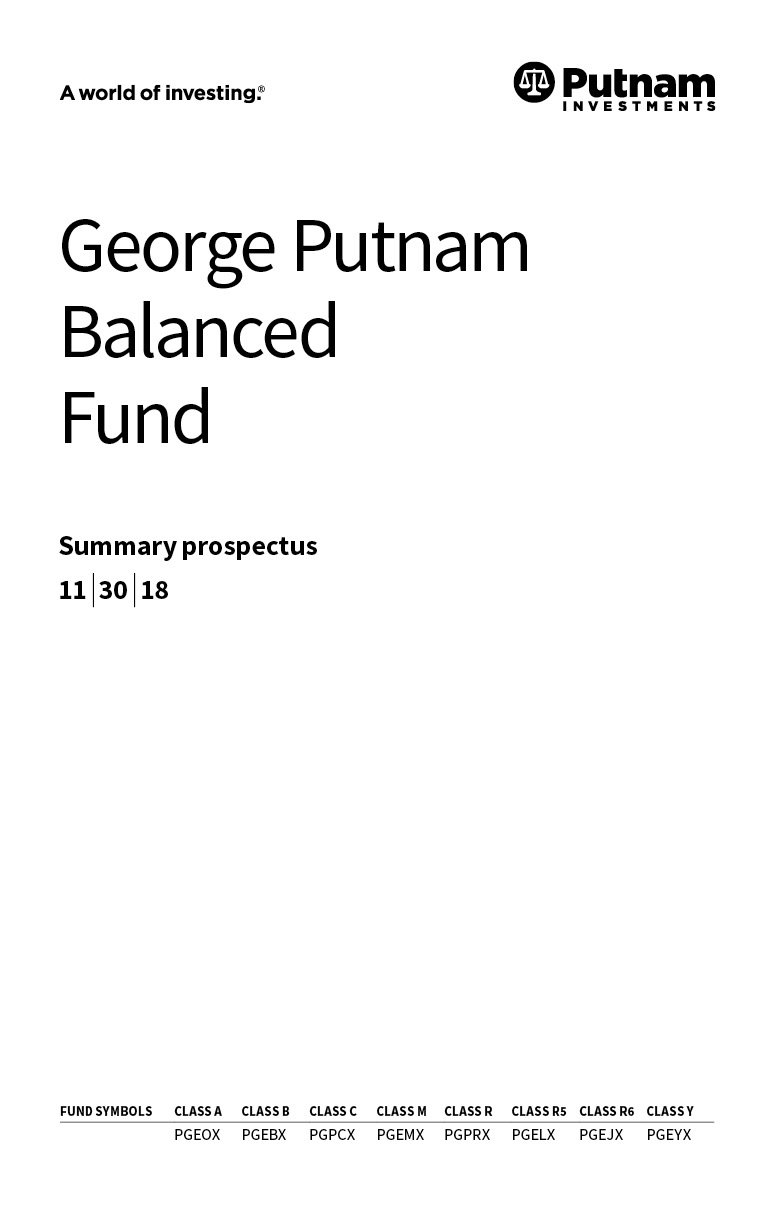AUK/Y/Z *9YH"IL6R0 5L"/I-TT 6HW@5-BV2"IL6R0 >25DRT$?D5HSK<3S
M /S*OYM(^L\(L9GH@
M 'A'UGI
M 'EG/0Z/@ YFG3(
M JTGYGYD^3M* 8:5-"WZ "F>7
M, "F>7,#XRJ26!27I',UP3+,5*FA;]
M/)(@&VC?9A!ZY'PR0W^#7A%TEZ90:=-+DQ#]CYR&IO0J9ERH
M IGES UV5:2SN<\R-1C9CI88*FA;[*UA)PY@%ADA:<
M["<1RG+39KHKX'3P^(DT<J"ED=G
M #>Y"LL' IGES IG%Q4\ X/FXCDT7
M 30!5$+DQ4Q+$QQW++QP0/C-FF9G7XXG&9D5B4)V&(UG"$ZJ'1XU.><53BWT
M:2*F9=9 *Z)J\]PG6=<#F 7,"F>7, 4T"U
M45S"UP"F>7, "F>7, "H(6
MQ3-BF>7,"F>7, 4SRU"5XRU6"F>7,
M "F>7, "L63D/:*\1>3*9YT:I)^$#"99$LYH'7\^L]L^4E<
M "))P0-NGMGM&/'MG[&/'MDGB$!DYT(.:QW5.3
M1I DF:T/W,I-(&YC2)^Q]9WT.&A]ACQ-H'5,
M $>2*9(4CP;T !X)YQEYEAR].JYPP.Z1Y9@IEY'P !@!Q )@&?F\C(BOZ
M;^/X.LIO0KYDP2$!9# (
MAG%@F0>N3W-<'*@E$8:=+C-RN43U-*E@
M C^2 !'\D
M
M
M
M
M
M
M
M
M
M
M
M
M
M
M
M
M
M
M
M
M
M
M
M
M
M
M
M
M
M
M
M
M
M
M
M
M
M
M
M
M
M
M
M
M
M
M
M
M
M
M 0>,4(QGW$TR+Q^1KP\,WF;V-1G3\&#$!211%(QHG"1V.
MD8(#F>FA#Y@8&=3S+"/9$\DV0\/')2FSB0(( &RR/I\A^AX!+LE"16-,F:F@
M3R20I^I.0$ #."/1^IG!&LDZ=!B')B9AQCY\AM,CF=13UR!)MXCH?N;;,*.D
M( !'@QDP4P(DT:P,N-7F+F5GOG\$W >,0>/B/:/Y/;/P)M@AZ>6:J-
MI'Z'G$NS*S6Q$<]D^4_DV:9 2'!#,\HPHSL^@^LW";G-)$=C[3RSYS;1[A(\
M$,S5YDY[!DIK1 -X&('Z&8FVP:>,8-5F='P'P$P :>,I-
M&&RC49DYN S8&GC!#7IZIFAG1ML&GC[S4!^1ZYYA+( T\://3,^/:/K-M@
M
M
M
M
M
M
M __V@ ( 0( 04!_P#,F_\ _]H " $#
M $% ?\ S)O_ /_: @! 0 !!0'_ *=!UC%*\;/M16N#NLW\@MN?[NVY:,"I
MP/438>Q1(/J98A'O[ZNV=[-;VO*W(.[
M_P!8USHP%;T2[*QZU,RJ-RL233FM]\--H,NREX,U6F8]F&K1II599J<6"WXU
M3ZH6=QVB+,E;;V)GFT9;O6W@+;MT^=)X?<)\@9XMRX&RN1&X;ICG'=O'TC.Q
M[JS>JY#VVL6-+J^P(UFKG_.'NI8.M?\ #83W!K8&L,$=K$-5IBU%A]+(V"7:
MR+-+9'4P:@SX',/_ C[! %6 ':$ \U>IM_# )N'+TD=/Y[88;TS6O\ HGGR
ML%0*$(!9M$53A=*PV>KV.JJ^G,#)$0=W_K%?7"S5ABR]FJW3MTUS[U=3NE?O
M[>SQNW^9JQ^#*-'1"SYLFO"UJK]?TZ ]/&WM=@$F7IH:AK@\CLR#PE;B;>KC
M-H.7W[UTB!\#"R[952LJ"[JRD!WIQVF2!"*Y:5]O?W1_^:T77'7JN,8A*K%[
MYL#XMY;4:9::LV24M<\@ 6G9'K)M-G+52UI[**J=A8& D+/(A*OK0V>L0J@K
M5@JK;KU"/)D]MN6]Y[%9V82U@SE6/C'74@J7%CL0B%_/;CUAG(8QDZ;
MDRT8AJ-.8KGJT16G4$%+/19&5(Z, W?^L:8KXLT/@"X8G'M:IRVI#3W(NADW
MQF8W:91@"0STXNGYZ<6,V(:LVD=3/D?>?E,@IK+7U5O76M6>^;FD7'(H#\AU
M/^=]U?R1I5^=]U?SOI5^2/\ FN.I+ZOYXQ&9K8*ZHCS5GF:0VZYP6I=$ZRS(['95*"($'669G+,NN^0N[B:0_"W(%07
MX+7EM5U@"I:!4TXZZJ59S5EK_G\V''(QVGIU[RY$R@K"@Y%75I_9,M/T:#J*
M-QS+)4MH/3E6E0GO'7Z#8L4CLV:O"P=96M6
M94Y<317BGGJ>G^^LT[PVI(4@:E@Q3.LD['P2"B
M6R4(TBU#FM0 H"YLDOYBTW7#$VX5;_L_,F3KAZOVX"PLY9>[#;WRJ&[$63F7
MV(8U0?YALW*\7-_OGX.W@&9.5[>*C9G;^)AM!44Y?VSM9=D@N0I/4Z'(AP*T
M4A>*Q-7TYSBT%4':HP?\PUQ\:\-8KOJ652!ZE'W)9"A_#MA-_
MVK(^V'9A]E-?UU4_U#L#^#/GQQ<=H;*LCZ6PZIV:6Z+UN6'09P25BG(5\7M$
MJ*&+$VML-E*4;:E3X-?]G\[/,XYV,QB;ELZX6^XC=&40]IKML=L#DK/JM4A9
M-W17M#LRBL*<-NFP(*++G)"(X7J]W48_:?9F+E:7ZW5>?Z=^N3KZ,?RSZ;OR
MH_43II'S84.BK&;"[YP]D[81FN%A-)RQ-C(%B3N.,8W#,^"[ \JR&S!:\HZ_
M9ZH9F'+>V)R.%86#37;6&[IED17YEDIR]V?+BOG//U1LO^E:7TV5,;C2,((-]RO5XDG2D[(KO%JU?!-IE_8VS,KO#K
M32'!T[&^6[=@JG>?O95.53L.$MLMMXYY5I-TT0(T(-S<%6C%TC3]CR%T4U+E
MWA9 ()"6Q_-GT/%7SI4K;V>5#87Y%INM(M7+?+"_JU6WBQ=,'2UQ$8XFZ2&)
M&(_NLYY8D+55 C*:;S=I6C>\#79BRLU>^CE-Q#;/_==6W#VXB*-PL)QKV2;:
M]3(U?+VO7R+QC^DZN?)W-A?D7C'])HI4'NSU$B8(&&R >!E5M32/:%8_?IUR
M=8,",+CS"$4=TV[D ";3KP5[&*YW!^0* 2Q*BE\N(%@6W9+2Q* )FP\)&/5O
MO[JEG_8UWA^QY#TV/]!CKQYJU8LKEA:X5V#5M*OSOO)_D_SUG6EL,J[^BU\<
M*4!=1R+1-6G:L5=8O[/U,]-Y?[/\FI?]_P"G&POR+Z;7UI.5V2L=GE1K%[$;
M( Y(/4&L9JL+W._R>=*E3W.7"_HM?'#6NMQLN"A44G7*AZ.X_&6LS]E21P7I
M]7X_W6$X(EQ>:]?(O&/Z3JY\G,?TG5SY.XQ_2=7/DYR<1B&()7O9ET
ME!6FY]@[[!TZ,I^7JY\8[@_(%3_DCFPOR+Z+GRS]C9,?7-UL)9)T.^UC9P>T
M1'+;[]>B/I5^=]OTS,QIVFEE1?:+S_USW]O;M[&(LJCK(!FX3(/YM$^8WYSJ
M11[(J?L+\B^FPSL1L&P"VH=?$NB?K,AITC_US==,S28NI-E16-8_A8_EG^"L
MY?1'L;ENOPFOEO5SY.YL5B[8;'C2.DO"Q_2=7/D[C'])U<^3MX9TC&.U 'P(
MZ%S<]B&EV'5SXQW!^0*G_)'-A?D7T7/EG['M.J0]LBV&CK(J(ACV^?!CE8K9U7.J\^'LY9Z;CD'KHO;W2AQ00!OFB(MNPQ1>UM>LI
M.]+4M;!0&K^=9FFVZ5B6FK]T-HJ6+VW+?/;W4-V<_>1*C!W\(_:
MXN=7$XVUEF!N1<5U7E,A=<_2/Z'JY;,UG?P;*T 7B&E?8BSPN&O*,:[0+T=6
M[&MVOS:NCBK!.4MB+%1XE0LC0YHNN%>M(.Q.'L?;,,UPKUI!V)>U5_JPM &>
MQ=>Y<:RKKN7'9VL)-* :X"9P.N]J41E87BLHF> G\O6N6PN^>@&N6S#9WVQ/
ME^T"-KU(_5>T^=^G7)UW+7@(0UK+AF8*V^[?;K[=_:PJ,<*=80^[)F!C(;E,
MC![(FN3=9YF)$PP,'W=E"X<[WC0\$+K]U9LKK!CH6T"M8AW^6A;5*<]A^WWW
M8FR!3;^KU]<[;%W K\JK;V"SR_X6/Z3JY\G?RRY\L_;['\L\SX,A&#,SH'&*W$Q3R"=B:Y-9<67IGZ,?TG5SY.Y.GQAF$GL57 CNJ6BJ/'?AM
ME$+.,66@G(K/=2.GY5*TU-Z[>C"VA5+#BV4K7+G$&Q[!&XTV N)/L'V#KLYE
MQY.N7KS+EZ8.A?8BN@F56?EUVZ .G;%;?V^Q_+/#S<$5L-W/N2^'*O5;PE;V
M9!V*>RJ>DOOWPV3IS^!"M1+7F0##'])U<^3O?AZE+4MAF@Z1 >F"XZ7+4:0U
M^LK+9ZENY^7D5Y>')=$Z00_]6S:V-T8PTV\=[$4+YM_%4@)"K5OV,+Y=(P'O
M&HJA'"MG'8Z[/>K!E4ZZ&[C]F/28-WB:[649K5K[=O;I[7G=9:VS25I5[2(;
M7J0;3O>O9,N;8OV_8@_(6L3]E3OR=IJ^1.B6[,FM92O;!$V6&XS/ZVF^Q;;R
MO!_M6!+'BLAC^DZN?)W._?KCZLE^(*KVV&V#4+*7-&YF3O&W<_+VE,;%U3N;
MO1,7<-IA)[YT7;-ER''^JU#"BJOI=)?J^6G LI %QOU82.;0EQ6=]O9MR!JT
MTV4,!MJ]%SY9^WV/Y9]-EEJ$PH&D9K-B/;,["D@A"NM09;!B"ZY5V#ZJV''&
MM1C^DZN?)S C@"Z9+)_9&O<_9&O<_9&OG7/Z+GRS]OLGO[
M=;8_$X?"+0&$8ME=BA3(+TTKZ4''6/E]URUQA.(9B63;:[5T-!(_C%CL/M[]
MA6KW;VZV=L;$D3:XTO8QHIA[=O;K[;576O&!&C'-W/R]I5^2.;N?E[2K\D;G
M5]FPS]7KL'GPO,%N*LMFW KC,#8:#O0;8XGG1Y 9#5C*OL[+-)6!WIQR%E89
MN+8]I@*O'U^1]R]C_;[OJ*X,K'^RIWY!TF:\G9"T^65K-CQ]G1N#-%:ZV\R]8FJ80$
MI:WTJ;I_FQ-2E[<%:]5>5J9=YL34I>W!6O57E:F72PF&=AV!I@0PR,="W5-]
MJ@U+CITUA7AS4/>=,2L*1AHN[IGO36J79')\N[66#9U38CM?W/L>#E*6%^SZP.?L^L#E3:RNB8W?\ +L+\B_<]C^6?
M5]V@5J[.PI76='XY;5*:.:X2V161;=8]Q+%6XLN\0_VDU=BSR%3V)[^_MU]KIL0E=3A6NK*FJ0G'61#:XSPIY
MT8]]SWT=^,61^QCG[&.4K5/Z/A-H_DY<^D\V%^1>;"_(OIL#_P#E8ULEL@-+
MU"!X2]@>FPOR+]SV/Y9]=I/;W]K.6NWMW$;"_(OIL+\BW .R%DC3PK
MB'/_ *;"_(OW/8_EGUW,59 YKHO9)7R+=G[7 @\5_!'0!GFPOR+Z;"_(N3'U
MS=7]6+T,\(.SJ6W0;#VH3U.(Z$BYPO\ <^;JJISV'U*_!6+ *Z/C
M=OGPXHA$O7R/-ZMETA$EHM:Z@E/\<;O6T-C7]IT!@GI6R28^&W&[UM#8U_:=
M 8)Z5LDF/ANR+T5:LS5C>JO:^63LTFCY$O9M9'Q+2MH-4<(FR8 X+-N A88
MBU0# K9]L4C ,LJ^%2K,M;VXMVI@?=E$RO2AW8-5"*LW;BOH4Z8T"1XD+MD@
MF2;Q8 *NAZKM"G-W%C:SK!>&>\ 2FRVM=02G^67<*W5&&L[F6[8Z_<"W9"-F
M'VS7(^D,X4+7?%+]JUTS5
M!$U90?\ 5_7Q%_P?N%]JLD.#!0ELD6HY]P'^K%NS8ZWJ:A+LVS
MJ:7;9PS-2T*2*;Z5!NC2WTJ#=&EOI4&Z-+?2H-T:6^E0;HTM]*@W1ILG7Y4M
M&:Y V,.KG7)3K(
MD_:TIUAEK#I);LV%,U+0I(JR:'5+2D5M4*W56'[FF%X4Q=,6+I@Z?=8F=P"I
M?\!\[@7(GW7Q;M5*O]T)U@V("=/KMBVNMU;'KW9!.LB?8U
ML+E61JTO)5M7O:GT(F3BAHBWL>H.#.Y.H= &)&R"<]E/NFPJH=LPZ,NMOOGW3MI_/H6#7>6[U61V5:6TO'UA8FD=#=/KMOG7Y>XU!K!V/.7?7[*
M)+8458L-I-0&5CMYR@A3EU'9@FM&QN[98QT98/HS',2P(A&GZ.FR'7*%KH!9;EX+VM,_U0ZZ:L917H
MBR3CC)]#9UM;6U19RI!W_54O^I0NQSDJQ -C'9UA75:IM0: ,J3.&6VXSU(:PE7)%QW@WF5H:[VZ8ZK#W
M:)X-VN-O)K0&G'0DS2O2M3CA862G'2:Q(]26FSLD:J;)/,HFAWL@ZXA5NLGD
M*1:I-K<>6G;"8K&)?R-@U['L'V;JK
MC&_:-2.") DZZ1/]!#0?=.[@ZBEQ6(76/L,&Q:!&#\I*@)!;LQT?W,3#=3D>
M[ YU'/>)?H1@8"L4=2Y.$*STN7++L"CL"W*&T\5$QAM.]12BJ4:'13WHU5;+
M*&OTN-0V?WUK%_V$JBEGCTNI)I9@?:=EN)H$'P+HWC>K078,2IDT>7S%0$''
M"+I60K1(=-$@8B#406(D(RB:6/?TD53-C'1%5G5\DMZY!U*0%J&9'8%ZIID!
MA)TP,.GZ^4?! '']'C/PLO4!TZ/)4MY=-@4P5 IM&2>@-FJF"?"(%>]*]R>
MBW5,U2*!Z0.AUX-00I4)KM0S!Q!'K"2M&1E#X Q2)5LCNT\L"O\ V=>$ZB.S
M\Q>A(+>0(4J7F@VBD,K-C=*TA/!6%1V48+1U&*B IL/"1CAJ=)AX'O1Y:'A_G&C-WCAJW8NDK@@_#+"68ABD/>.%*C8Q0<+1^*D6N:]GXOC3U)GAER4]2V:P_8H7\O\
M2]B?X4#]GR2M1%^.*6V%7:/\PXPSQL4JR6LX@20 OL$'>GD_O_?/*8F28_F\
M.6?#D=Q[)<+))KS&A#YP\)Z746C#B<5O,81\20("^]'=XQ6--F2&O9;%(>VT[/J_,YS2=/ D(?.'A/Y\O _%8*F"\7"$*>DYX)
M!"/XV&AD8Q/+4
MJ1W"!&KHC(F)Z0T+4,&ADH!$35>('[^J I^"KQ.J)F2.3KHQT.GDV6RCS2AT
M/F4E8[IPO_J)?__: @! @(&/P%DW__: @! P(&/P%DW__: @! 0$&/P'_
M .'09EWN+$%@9H:CF?$,\%'MY:Z951"E$?;+6$Q8&XV0^H@);D)<
MC%1/0GGI0%'Q G['G;M*1SGUGE1(P50O/$<*]"1Q4>@>,@8GW-B.Y=78Y3K'
M.:98CIDT2
M.DXK_5G_ /OPO]XPC:NZWG%VWF]V"WR2Y ="M-"3GRZY*!\SB,@0:CABUQ/8
M/M+OK3CNKOG=]&A032G)VZY'A("W$L)2IP@J">R%*2.G
MK&+?8X-ONCCJ/V*+M6H\BSQV64)Z.8^A+[BQY0I
M*3^)AC;:5J9NF\X][EPUI64.)7"0A+.::9=G4.O/QXW&Q=[A,DHC6E];3:YD
MA.E\K0$KJEP>;G]O%ZW)<;E+DP]NVJ9/4T[*<4AQW06VT$$D9U-/&,7*3%'Y
MK=T,W2.?ODRTZU'X7->+*_)45OQ N$XHFI/=SI02>O1IKX\;8^B2?G$XO;]X
MES6%0G6$-]T<:0"'$K)U7SF>8=?,4G(U'0,;]N%\4R7F'4L(Y+?+&BL=?"IZ5
M'$&]6XH$J&OF-:TZDZJ$9CX<7_>#JXWM*%=6XC1#'R?*/=>*:YGY56"[?&8\
MN,EIVC+#(:4MW3\G5=31.KSLB:TVY'Y9(\2FBFA^WY#B\[QL0Y4F'$E*4R[1?(DL(U:54\X<".M)'
M Y"$NY=U:,E#44)<4R%#F!!*LE%-:>/!D6]^/;HP4=,9$=MX:>@+6ZDJ
M)\8T^08TJLS2K_KT:\Q#Y=/RI3JU:NC16GQM7Q<&0[/C2&JC\V(%^C-\DO!2'F:ZN4\@T6FN51T@]((X?X!+V;%D.&Y1B\DU0 TI;'Y1"%:
MLU)SJ*?%5U?LI5_N3+SL>.II*D1TI4X>:L-B@6I XGKQ;;S$0M#$]AJ0VET
M+"7$Z@%:217R$XV_MN7'DKE7M6F.MI*"T@Z@GY0J6DCCT)/A8LDZ)/F3'6@]
MRX3*'-"5$TKK<1F:$T%
MTGLMA:P%))2 H'"'6U!2%@*2H9@@Y@_X?>HTN0(K,B1 "I"TU2VVXPQ5RG2$
MU/VL;%OUKO[2(&VX,6*PP&.9SVTA27%AP.4JZA5.!X YX^L>);+@W*:5%*J-
MBB65RGBYR203^3X'_(0<7^);KZTQ-ODAI$Q0:YBHS<1TE+2DA8\\=JN7973/
M&R#*O#3UQMD<6L(#>E(JH9CI6ZLFDJY2GD5^]"&FLOA;/
MPXVQ]$D_.)Q,9L$IME$M2%NZV$.U* 0/.!IQPIXHDWBZ2BD**$5-!V1DD!"$
M#]RD8V[9G5I7*-[:D2U(\TONQ9-0.L) ":]-*XN=3QLTBG^TQ<6#]7'YY>/K
M%^F)_:BXVS#G16I,=V3I<9>;2XVL:%9*2H$'%\C6BV1H#"Y$)Q345A#""LR&
M@5%+8 K0 5\0Q:+7=&^;#^7>=:J1S RVI82:=!4!7Q5&-MR[';VX/?T3$/-,
MC2V3'+.E03P!^4-:<:#'UA72XO!F+$:MCSSA^*A(F$Y#B>H#,G(8FO[<^KFW
MJ.>=YORI["T.!*F5$:1S"G2:A)U4J3S3
M][DMRWRU-LW:"HL/MJ*5H$AKLJ!2:A2:^4$8A[(8GS5;B;O4M#BD2%]Y[NPC
M5H+FK5^44KIX-TX8^J^U1KE,;3;8*I%X++ZTEY<51U![2>US PCC_'=%3B^;
MGE[VFVE#$I<>##B+4$,*"4N))2E:,@%@5\Y9!JK+&XF)UT>]I62ZQ(@GL/*2
MXZVM1R+B""JFDY_&%*YYXONX=S;@=N#]Z:LKC<996H16TOI4D:E*I4I6*@)%
M".*N./J@V)9KNNTM7>V0EOR6EE"SJ 0!5)!H D]D$:B0#CZN+?+W%)O,94AI
M<4RU%3K(Y@"T9D]FH!'PY=)B(LKW=I=SE"*)-0.2C25*()X*.0KT"IR(&+3N
MV'OF9C6CQ8VG]7]QO
MEV9C-6]N5=78)
M.I#R):$IY;9+M10J5F-6GLZ@!4XM#&Z-X[CM5[5,_.8LW68975V\LC
M2G'/+ZJ["F^KMAW#'95/N"5=EQJW=85Q3'6'.@'$:(W\H$Z=.#:77!*9;:0A%2$H3
MS">)S).>5 .GVMM?=[$N-+D\E,-F0E4AE*DK7FIM9UH3II4@&I''CB%:X87+
MFRUI:;UJ*OA)-:)2*DGH%<6JPQ35N"PEO52FM?%:_P!THE7PXVQ]$D_.)QN=
M5PML:66WX@07V$.Z04.5IK!ICE0HC,9O[QEM+:?M) P^83:G'+9)9GEM/%3;
M:'&U_O4N%7P?!AF[V268TIH%.J@4%)5YR5)4""#X_*,P#AF_;C<<=(4D_:.-V7:^.H(\='+;#:4M),-0 \:E'.ISZJ8MGT>;\
MRK&R?_-?^R8^MN!;FU.2%,V1Q*$9J4&'WWE) Z24H.73PQ;[^[;TS4Q>8%,J
M.E7;0I&I*B#12:U&7BRK7%KDIM2H-O@]Y;C:U:U..+Y1=)6 !4 -]D5TUK7M
M8^N7]5QOFIN-F_KFU_I3>+7^N8_Z+*Q=/U-(_2HN+7^IH_Z5*Q=/US(_18O_
M ]H@.7HP8,23WB0RF/S#)- E(U%A\O
MNMP>[:0T^^C2XYS>8=5:K-- S5QRSO=[8N/>>_!;4=GN_*[JRMWF%&KF+U\$
M"M$^;PSRN,K:&\YNWXMR)[U#:2I2"%$DZ2AUO(5R!!H"1JIEAS9-KN*XO.DM
M2GYSK(?<==12M4!;8I04 KD.LU);V;[3[MI9A-=Z[OS/Y*4&O+YB?.T??95Z
M<;7M7M=V+"N-;#NBZ;VE72?;WFW7C)C
ME?.2V04-H)?JV!G]]QK08=LMUU)05!UEYNG,9=34!::U' D$=()'CQ;_ .M>
M]9M]MMN4#&@N(4A%$\$J*GG,N@T )&51B/OP72G*B=T[EW?CV%(U]JE ,629N'?4V]0[.X'(D1YBBDZ
M5)4$EU3R\NR*]FI IEA>]+;NN3:UOJ85)89:-70V$)4CFI>11"P@5!2H?M8W
M5NWVUK]NPI$3NW=:G1J4VJG
M*YQKYGWXXXVEMU_;$_=";<%LJEVPVVF2S,E3;T5=X?4RM+B1FVVGX@2D(3TDJ/5N'2^X^GN4AYF$!;&)10AC15"=8
M[(^4% /'BX)VI8S:6&'$%YOV>B$%K<3DK2WYV2>/DPTC4'EZ4N@T4
M4I%0#F0,2=V6:$Q;H;LE$-YJ)!9CR7'TU*4J;;TZJ)45C/)->FHQ#W(=KPW?
M:+3@QK>8;DBT+;4!+$>:VP"Q:
M8J9<>2*K0: I/9U)(/41AV=N:T)ND&,ZTKD*AHF$.*/+2I+;F51K.?0"<,0
M=J[8,"=*UQR^S:&8P YA0XXUF!V.!Z0,0'MW6*/=)\I);C-^S69DE3:#6@+
M@R2%*R&H9DT'''?]GVYN# 2%'2E(2HT &H5X4KE0?8;L"YL6
MV2["C19"7Y2&%J8:)3(H%N :4\1Q/2,7>';(+\R2MR&4LQVE.N*TR$$T2@$F
M@SQL0PHTR78>]LS44:6X(#KH:[PEZ@[&:$YJH"!UA6+Q:$(U22WSXG7WAGMH
M'[KS?(HXO>\-VQ)#%UE)CV]D2V5,O=WCMH25:5@$!>E Z*Z#C84NUVV[2DPG
M;@M]RS-.*DL!7==)2M"5:%'2=)/4>K%U9GQ]R(4B0A:5[E4M3Z@M%*-%:4]A
M.G/QG$.YP=K7YR2S#Y;%VL;U7.959#:VD(6H)34]NJ#G3,4Q 1NX+3/"G-(=
M YP8KV.;3XW'CG2FK.N-A71FWR'(,:!.0_*2RM3#2E,R@ MP#2DDJ%*GI&-U
MQHS*WGWK3<6VFFTE:UK7'<"4I2,R2<@!QP-PB--$KV9K-HY+W>?: D7G6>\,+:Y
MC9KVD:P-2?&,L6&4UM>]33%0]IN-D>I)CK611'*"%E0RJ3V:5R5Q&'$[N3)2
M]WMTQ1-_E/=BE!',KVJZ]?G]KKRI_P#)^J<<4$H2"I2E&@ '$DX\QUI50:<0>HCI!S'3_ (3>;-_5#G^SILJ)S?:>
MCFK3W55*Z:TJ:=9Q_8G_P!U_P"Z8'?]JR&?]1+0]E^Z;:QR+1<-,RA5
MW.2GE/T'&@J0JG3I4JG3^S,"\7Z+"DA*5\IYS2K2K@?\=2-FV>0408:M,]Q"
MJ&0^.+67Q$<".E=:^:,1;WO5"W%OI#C5M"E-A"3FDOJ20K5^ *4^-7-(#,7;
M-M;0.@0F<_&24U)\N'#;8+=EG@'E/0T!#5>@+931!3Y %>/#L>5*+\^:L.RM
M"R6$*2*)2V#3@.*J55Y /\)O##R XVYN:4A:%"H4E4]0((\>/[(6O_8V_P#-
MA3;NV(S->"XVJ.H>3E%/WOA^Q<>>6&VVTE:UJ-$
MI2D5))/0,?U"D+%0<-1X[:95XEI*H["CV&T<.:[3/37(#(J-!&7'#=CL6A5XD-\Q;JP%)B-G))TG(K5T Y 9D&H&$WV[7@
MMQI/RC*[C(=470>"FVDA02CJ\T4\T4PA7MV8W;7%!M$BVSY"&-6>E*T@H*33
MK%.HG!N5@OEWFQ@M32E)W"$%*T\0I#DI*@N$AQM8Y:S125+(/@N+B%%*DQGU)4#0@A!H0<
M;>A7+^ZV)$]]UI>F&^H:D+60:$ CQBN-O_P!052QI[[WWNKZ&N/(Y
M6K6I-?CTQ.8W&M]=T;6$R3)>YSNH)%-2]2J]FG29F0%J00H'\8"O03B79;XX'+I;T!U+V0,B.3IU* ^,@D FE#J3TUQ=;U%MRK
M@["94]W=*]!4$^<:T.2151RK098=39!)9A:J%$ ]TC-^);Y4DJ/6"L^).#<%
M.QI,I(U ">HODC/)3B4IK^[Q[)W&]*DP&G>3,ARRI;T?/-39750*>.FNE7PZ
ML-/LK"VW4I6A0X*2H5!'E&%1+5N&XP8_'^)]T+;XE$5OX')3+:ON$XW*\1VT0V$ ^)
M;M3_ ,4>"T^TX,J3[1[QR^[!OL\CEUU:UIX\P4^''N.Z?:8];B1:+;;ID9UF
M*N652 UI*4.-MT&A:C6K@PBVQEE#MY?[NH@T/=T#6[]OLI/B4<3-VOM)5*FN
MKC1E$5Y<=K)5.HK76OB2/'X#=RV.\VF0RM#E!JY;ZPRM%>HE23Y4C"X;ZO=<
MQ^.@D_Z)82\/M%:AY!A2><:76XB.R:UY40+TII6OFMC5XS4TSQ$M=N82Q%BM
MI::;3P"1_E/$GI.?@[W;$]WC7- G,AOL\IX*(<":<.T H4X:LN&+!>G% O2(
MR0^1PYS1+3G\-)QNOZ4/FT8AVQM">]N)2].='%R0H9Y_>I\U/B%>)/@ND>X5
M"7[\(2Z_Q*'TQD]7^C2/@PAMM(2A "4I H !D ,;GAR@.6JWREU(!TJ;;+B%
M9_>J2#\&-P6H:C'>@IE'[T.,.H;'PD.G[6+)MAA92F65S)-#34AHZ6DGK!5J
M/E2,1+JIH=^O([RZY3,,U/)0#U:>UY5'Q>"P;C0V$R$OJ@.K %5H6A3J H_@
ME"J?C'&W)+ZB76FEQ%DFI/=G%,I)/C2E)\-\EOJTM,;DENN&E:(1.4HY#Q#'
MOEW_ &&1ZO"E6\3+D[\5#;')37\)3VF@\B5'Q89#$36\L!J/';KR(C -25JI
MD!6JUGB#=?TH?-H\%T^BR/FSBP6:ZMER(^M];J =.L,1W'@DGJ)0 ?%7#4:
M,RAEEI(0VVVD)0E(R &0&-P6R0D%$B#(&?Q5A!4A7E2H CQC%J936DQB:PJ
MG4&%/9_"W@I4 4D4(.8(.&HD..B.PTG2VTTD(0A(Z !D,A&
M%?0(G_+Q8G;=&"'KG"AS9;IS<==?92X:G[U.JB1T#QDDXW-;XR0EEJ:\6TC@
ME#AY@2/$D*IB-9K-&#,=D9GBMQ9XK6>E1Z3\ H !A^));#C+[:VG$*X*0L:5
M ^48L$="BKD7I$+4.D+>[L?N*_Q/NJ&A&M?<774I'$J8^6%/WF),!U8 N,!U
MM%32KK2DN@#]P%^"%_6.V=][ES>1\N^UHYVC7^1<16NA/&O#+&Y;E"V]RI,.
MV3Y#"^^S%:'6F%K0JBGR#0C@01UXNGZFD?I47&SJ^9HN6G\:L>O^3$&?M?'>.5WB4IQUKD.-!G7&V.9PU3./WW'9E//TW/5^+6-3_ "XMNJM.\3=/DYRO\M<;K^E#YM'A_KE;T*[E<%MK<<0/
MY/+0 ,^K70*2?OM0ZJQO;ES9M5S;0D26Y!Y;2UCBMM9[-%<:5J.&?$S=M;7F
M)GOW!!9DR6Z\EEA7GA*B*+4L=G+( G.M!B?N.YLEEZ[):1&;6*+$9%5:SUG$+7P]DQM'XO/D?Y:XM,VT;JD-0'XK"XK:;W);"&2@:$A -$Z1E09#
M@,?VOE?^ORO\^$QKO?/:#"5AQ+4J[O/H"P" H)'W-F_J:U_HK?@W7]*'S:/#:_[TQ_Z0'^)U(6D*2H$*!X$'HQJAZD"+(3-MKI\
MUQ@JJD<."^!
M_'.DNN?PU'&Z_I0^;1X8/U?-S%1;6W-@PW DT#CTA3>IQSKT:Z)!R%">G#26
M69L%2$(25QI6:](IJ4'DN)J>F@&&9;5M7.D-:2ARK0 ENOCTY=%/!
M9-SL(U(C%<*20/-2X=;1\FK4/*H=>&]MOO@7&T:DI0K)3D52B4*3UZ*Z#U42
M3YW[*Z?WID?T@?V-E,LT1"NHC.E7Q1S"PI1SZ*U\%PF7-X!3S3K$=D'Y1]U:
M" E(_;/ #&V?Y_\ H,CP;J2H4)D(5\"F6U#[APT^T:H=2E:3UI4*C%T^BR/F
MSC;/\_\ T&1X+I]%D?-G&V?Y_P#H,C&U(::]W=D3'7.KF-(;2W]QQ?W<(DQ@
MGO$F7)[VH>=K0K2A)\B-) _"KT^"S08&U_WIC_ -(#_%'L^YI+;S6I
M464V!S&%GJKQ2:#4GI\1 (,^U,R7DM'Y.?:2M1TU^.A'RB>':!&GHJ<=SDW*
MKJ>B3 9#HZ*?DTG[>?CPF-):NVS)9@
MN]EP-,]RATZ=;JJ%0_!U*\2<6F%>I2)4^/';:?>;KI<4@4KVJ$Y<305.=!AN
M3%=1%O,1)2P^L'ENHX\IVF=*\%4)3GD:TP_$$22Q$!4M3;S'>8*NM:5BJ1X]
M*DG[["K7;FG.6]\FXFTPUA2Z]"G!K4D==%)RXY8C;DWV:+B0 0L,N=#C
MJ@=)4.A(J 1UU^!F'=8S7,"1I5<("VWE@=)HINOEIC^3VL_S9
MWUV&6=SV%H,J4 N1 4L(ZP>(/4
M1CVQM)4F=$967&'X9/?&!U+0CM&G6D$$<0GAA%OEMQWI HG\Z@J2^36@[*%-
MY_N<1UN+DQ(C3K;R%N(,&$VI!"DJ T@NE)S&3A!PPF4M*WPV@.J0*)4Y3M%(
M/ 5X>&XST;7NBHBMR/OID)M\@M%HSBH+"]&G3ISK6E,_V,[=.WH+DR#.47Y+
M,=!6ZP^KSU:$BI0H]JHX$FM!GA-CBO*FN,I"&T/PN=);2!0#(:CT>?JPSNGZ
MTGGE,-T4S!?.E;O2$EM- RUUIH%*Z0.)MTB1MVX1[?'D71(DN07FXX1W:0A!
MUJ1IHJHIGG44\"=W;?B+EK+2&IT9I.I[Y,40ZE(S7V:)4!F* @4K1C;C*$O\
M@(T.=,2F4Q7[>EU0YK$N/KC.J'!23YI/X2%9\*X3;[1%5$C/T#
MDF)',5K0K*ID.$T'3V%:CT XL\BW-3+Y=I$AP3NYQW'D-I**ITI0DJH#6JU>
M<>@<,;>A7*&]#DM=]UL2&E-.HU3'U#4A8!%001XC7"I=JV]<9T?N49/-C0GG
MF]0UU&I""*C&U(TEE;+[-IMS;K3B2A:%HCMA25).8(.1!X>#Z2H[LD
M*;>9M\AQM8Y:!5*DH(/AMT]>U[HF(G]R+$B0VQ(GM(7FCFH6VAM*1U-I75(Z-(/@*5 $'B
M#F#BQ/6R,S&FRV)"YJ&4A 4E*D!E92G*I^4%>G3XL;;$RNHIDJ;"N/)5(<+?
MP:!&/ZQ;,;D2(3;JGHST5/,>C!7%MUO,E(!I6A2I/G4X8
MY-YVPQ*?1V5*:D+BG4,LTJ;=H>O!A[:VFVU*6.S5QR-*$-M9^6H\6/ZQ_
M6&Z]'8<4E;J'C29) I1&A/Y%'1T$#)*1Q#,:.VEIEE"6VT)%$H0@42D#J ^Q
MZLB(T\?^D;2K]L8T1V$-)ZD("1]S[%GY+@)2RVMQ03QHD5-,0=OVV!BW)6IF/RN:M[D@D]XU:=7
MX-:='V ;BM-MOQ2S&NDZ+&93!B+(0W(6VV@58*E&@ SJ3C__ %/_ $!G_=,!
MR[A>C5_UZTI93GT50VU_GQ'M6Z83=M?>*4-RVEGNJEGH6%YMU/ ZE#KIQ_97
M3Z+(^;.-L_S_ /09'^#VO^],?^D!]@%T_O3(_I ^!;3S:7&UBBD+2%)(ZB#B
M,[:&4QX=S8YXCH%$-.H5H6$#H2-2B ,:']U1U'A^;
MH>DC[;#:QCEV._1I;M-7)2O0]3KY:PE?W,O V]>+K$M[;BM*%RY#;"5*XT!<
M4*G#4VW3&9D9W5H?CNI=:7I)2=*T$@T((/C%,.1[KN2*T\V:+:;*GW$'J4AA
M*U ^48Y=COL:6[IUKK&@-J\TR'DMZOQ034_!CNZ
M=T-:^M4>2E'[]301]W")ELG,S(Z_-=8<2X@_"DGP)-\O4:$5YI0ZX.8H=80*
MJ/VLF1_2!\"Y%WNL:$VCB7WDH/D )J3U 9G$&+MR*Z^PTD0H*-)"WU
M*45*=TGS0?'P2FJJ9TLMCUA:H,5MI:QP4Y2JR/$5$XLT':3[Z[?-"V)+$8AH
MAT=K4\[E1M2>LA-0:UJ,)=W)N H<4!5B"V#I/^M=X_O/A.)5SVS=7I;D5M3J
MXDE"=;B$BIY:T:>T!6B=/:X5KQ3LR?(+D*:EQ4(+->2^@%92D]"5I!RX:@*9
MDUNGT61\V<;9_G_Z#(\%RCW^>>Z0I*VT2Y)*(NCBE4=A'&J2. \2E5P!,W'-
M<)B36P6G6G6^UH50FB@,P0>UF=5G+Q'_Q3<[IE$?\ 5HZ0TD_NR2K^#Y,1F3-*CE)@SV*ME02>
M-*G2M)XBIIEF0<6:]O4[PZVIN2 *#G,J+:S3H"J:AXCCGLA#MTFE34%E?"HI
MK=4/O45'E)2.FHEW.9<%%I"M,JY2JK2D\0VV@4!(K70G2E(ZJBNEO<
M;@E7)KF([0R+Q'77)%G&)#@![M"2@\KQ*<7J"CY$T\9P+WL2_//28GRB&5_(R>S_%NH(2H_@D)KUF
MM,;:D3]7>W=P0')&I.A7-5,05U304.JN5!3[ -S062D.2;_/905>:%.3%I%:
M Y9X]Z6;_:)7^ZX*FI%KE&A[+4IP'R?*LH'W<&)>-H1PMVNM;[6F2MO*O)DH
M*DE/DU)Z\,WFT.DMJ.AUM63C#H *FUCK%?(10C(^"M[O<2$>(0Z\D.'IR1YQ
M^ 85R)$V?XH\-2:_[06L;;E6]OE,NWN,EI!R*67Y 1I[)Z$*IU?!BZ?19'S9
MQMG^?_H,CP%2B D"I)R PIN;N6.MU)TEN-JE*!ZCR NGPTP;':F)CLA,EF0
MT^ZPA#*=&I*N*]==)/Q>GCC>$4_DVW+H%2J>4]?@VS**?E6Y;[:3^"XV%*'VT#$U"N#-VDH1Y"
MQ'7^VHXFP]9+-K98C-CHJI >6?WRZ?!BR6=E("F8[:GB/CON#6ZKX5$_!0>&
MXL2Y:68J;@U:^:M26T,-,K#"U%2\@ K6HDY9D\,1X<7=MD:8CMH::0FYQ0$H
M0-*0/E.@8_ME9O\ U2+ZS#%YVY1*R<3[S(0%BT1P6@16C\@E*5? E*_A->CPVO\
MO3'_ *0'V 73^],C^D#X;XY);3S;>V)<=RG:;<;(K3\9-4GRXW#::JY+\%$J
MGQ0MAU+?VR'?AIXL/;0VP^J,\T$B=,;_ "H4M(4&FC\6@(U*&=>R*4.$7??%
MS?8YXR4(2-*4I3/2 !P Q=/HLCYLXVS_ #_]!D8GW:-N_3U_,JQ=
M/US(_18O@V[]/7\RK%T_7,C]%BXW2E?$OM+^!;#:Q]PXCRFC5M]M#J3^"L:A
MX;M:K@M3+3U^>9=<'%+3LH]L5_!548_M%/\ WC/_ #*GCI2ZAL?MC&\8Y\]:+:L>1!D _\<>&U_P!Z8_\ 2 ^P
M"Z$F@&Z)'Z>K'\K:](G_ #X4_.NT2,VD5*W9#:$T'C4K#VU-L/\ >FY"D=]F
M %+>AM06&VJT*JJ U*\V@H*UJ+GNB:TIOVD$,1$J%"IALZE.>12J4_%KP(Q>
M)5T25HCWWO:TTS5'+X>2*?ZLC$>=!D(D1I" XTZV=25I5P(.%2+O,29!22S#
M;(5(>/B3T#\(T2,;[/_-G&V:FG\N^[
M"D8W2W%\\,-.&G\6T^VXY_ 2K%XMLMU+4FXQVA%*R!K4TI14V#]\0JH'3I."
M2: <3AW:%H?$^2I]I*T)[.GC0 YYTPWM*/=6WKDMMQ=&U!384C_1%
M8-.92ITBM DUIE5&Z8[1,*[!"7E 9-RVTZ:'\="0H=9"L0X$Z6AF^QVTMO,N
M*"3(T"G-;KYVKBH#-)KE2A.$[=1=F%W13:W>ZH7J6$M^=JIDD].DYTJ:4&+Y
M8\@J;%<;;)X!VFIL_ L X$BYMK1'/-@7%NE5MIU"IT];:T@]=*@<<,3K?);D
MQGTA;;K2@I"DGJ(PN;=Y0YE/D8B% R'U=2$UX=:CD.O&VYZD:#*W!!>*0:Z>
M9,0JGP5^P"_W>-7NUM)ZVE2'3]I3+?[>&I=\EN7MY%"&EMAF+7QM@J*OA5I/2G"6VTA*$@)2E
M(H !P &&[Q:I+<.[MH#:^;7DR4)\T+T@E*D]"@#ED1PH85NYL6.I6;L>[H:8
M\I2ET+_@5PF[;YN(NDBH7W1I2RT5?],ZNBG.C*@'65#$?=5OD6QBU,W:'/3'
M"W4.I:9<;<4E*$L: >R=(U4X9C!!%0>(P[*V@@2XO-+L5QJ6W&D, FH"N:MO
M-/"J5&O'+@+3:]SH#DU,4L3$KE[.D-2HBE%;<5YWE2
M&>G2%J[*P.@E23UUXX[E>;DY"ADZ5IF74R$Z/$VRXZ#Y#3X..+S:X)1+O<^+
MRA<)@TI0Y4*["4A?+349TU*ID2<;B]LRH3_M'N7*[HXZNG(Y^K5S&F_XP4I7
MIQ:H-GDQ67(LE3RS+6XA)24%.7+;1&>?>N#LI*HJUK1H6RRV 2X
MVV:U;/1U9^"U0;/)BLN19*GEF6MQ"2DH*CJSQ(M]PC(DQ9""VZTX*I4D]?_P"LN.'9.T+BT]'421$F
M**'6_P %+@!2L?C:3XR<\*M[ZY*(N:?E;RA3!%:>8EY1I^YQ$O>X[@)DZ,M+
MK$>*5(8:<3F%%9TK60>&21UZL2;5=8J),22G0XVO@?&.D$<01F#F,+D[1N;<
MEC5J3'EJY3[?4 X!I5Y3H_RX5#>>EM1\Q5V]I+)'#S4/J/\ !Q!W!?+QS9\1
M?,98A52RE5".VXH!2Q0Y@!(ZZCP+O5GD(M]V4/E=:3R)-.!7IS2K\( UZ1TX
M+%I0XTVX>TY#NS;+?54CFMJ/[W"+IOVZ]Z-:JB,NK<4Y3@'7U4-/$G]\,1MS
MVQ^V1[0Q=82ZEEEQMQ2$H2QHKV3I&JG#,?_ATO=B@V^UN1X3P;;4\S
M(4X1H2KM%,A(Z>H?8ANB&Q3FR+]<&45-!J; _VO_P"C'FP/]K_^
MC%BO5P3#[K#?UN\N3J530I.0TCK_ .&W7]*'S:/L0NG]Z9'](']A.V_&DKD(/!8KV1GAB2V"$O-H<2%<:*%17P7"Q3K?=')$)SE
MN*99CJ;)H%=DJD)/3U#P)V8]"N/?C-8@\T-,]WYCZDI2=1?"M(U"O8KXL!5Z
MF_G"TZFH; YDAP>)-0$C\)12GQX"6]IOJC=+BIJ$N>C#1'\/#IM+JVI3("GH
MCX"7D Y:A0D*3XP>JM"? ]=+S-;AQ&O.<A)H'
M'WTQ0H=8 0Z?M@'R81&O$5ZRN+I1QQ0?CZCT%Q "AY2BG61C=W)3BD*&K.KZDT(/_1IH$C+\$.0V
M;(W;W=)#4F+J0XVJF1.=%^15?MYX@H<7H=M]S[E+ J$K:YO)='C!34CX#BIX
M83!MVIZ&U([G:XZ.#A4H(YGC+ASKT)H.C#*[W";O%Q4D%Y45ZB,72PR7D/.07BT7&ZA*Q0$'/AD>
M'1X_L0W' YG+[UN&/[;?\ M7_>\2K-
M[4]H\^:Y+YO=^136TTWIT\QS^+K6O3PQN;^8?H,?%K^BQ_FQX-U_2A\VCP;K
M^E#YM'AW44=DB6#EEGH0:XW1-9-'&K=+T'J6ILI2?@)PV^ZG5[.A29:*_?U0
MP#\'-_R^'=?TH?-H^Q"Z?WID?T@?V&Y)Z"^UN75[3D);EOZU:EUD)YG;_"SS'1P\&Z_I0^;1X=U_2A\VC"
MD+2%)4"% \"#T8UQ-30BR!+MCY!TNLZJIZ8L5Z^@X9VU(F7$B6JK
M?+!0Z*H*4GXNFFGQ4X_8@_N5RX702WIZ[BI"7H_*YJWN<0!W?5IU?A5IT_L'
MK3>X@D1G,Z<%(6."T*&:5#K^#A@*A;KD,L:LT/0T/.:>K6EQH5\>CX,(GM-K
MN%Q1YDJ50\O_ %: -*3X\U>/!O=TFW%F06FV=,5UE+>ENM,EL+-<^OP7"^SK
MA=&Y$USF.)9>CI;!H$]D*CJ/1UGPW"^SKA=&Y$USF.)9>CI;!H$]D*CJ/1UG
MP>SK[!3(:!U-J\UQI7#4A8S!^X>FN";;NJ1&;J>R_#1(-/QDNL_M8;FS Y>)
M3:@I!ETY*".D-)R/[HJP;WQ*TM]U;;JZ.VHN!=:M'@
M@\1\#\$3GH@;2M:9$MGE,.A"2M6E6HD9 Y+"2> J: BPVYZ2B0Y4,+D,AMM\
M@:J(.HFOB4$UZ,0-MWDOL.RXW>Q*TM]U;;JZ.VHN!=:M'@@\1\#\$3GH@;2M
M:9$MGE,.A"2M6E6HD9 Y+"2> J: BPVYZ2B0Y4,+D,AMM\@:J(.HFOB4$UZ,
M(B7B0\J6MOG)C1V2MPH)(!JK2@5((%5##\:T./LRV43*>++;<5"%N5"2HJ(<<;&D
M4Z^)&6)=_E1WDLQ83DYUG2GGA#;1=4BFK3KH*4U4KTTSQ'FTGK<>*OS1,=LR
M&PE135?RO+%>(^4K3HQ/W=;7UR8$)B2^\E**/)[LV7%MZ%E/;IPJ:&H-:&N+
M?<0B>X[.4L-P6V&U2P$+Y>I20[H )'9[=3T#CAJ+=GWG9CB YW2*V''@@\"J
MJDH3XJJJ>C#SMCE*+C&GG1WDG"K/-+"K](GM-VT,ID=Y*OD^4H52H==:Y 9G@,\)MO/
MEQ@M80W*D1PB.LJR&86I21XUI2!TX]IWV<([)5H; !6XZL_%0A-23]P<20,7
M016K@TJWQ)4YQ+L4=IB*@N+4DMN+2,AEK*:F@XG%]O%U?NC^WY++B(4!(;4I
ME96SI44*=2@=E*ZT48%C-&G@5Y)&H))[6+9N+96]"M;SP2TPAYM4E":%SF:VC1;60!!13,5
MU5Q]4U]NR>Z&BN?5C:46#/8DO1DW!;R&7$K+:7N[
M:-6DFFK0JGDQL&'+:2\Q(;LS3K:Q5*VW+D^E22.H@TQL6WHMS"(DQ-F3(80T
ME+;B5SW6E!24@#- "?(*8^KU-NC-Q$N&R%26$!L$FX.-<$T^( GR"F-@PY;2
M7F)#=F:=;6*I6VYZTH*2D 9H 3
MY!3'U>IMT9N(EPV0J2P@-@DW!QK@FGQ $^04Q V;MRSVMR]);Y9N5U35$8.M
M]X*4=/F 'IJ:)"2<,L2;A$EO+,E,EZWMI:C.*-M6XI*4IR[*A1725I).>-]"
MY0VY28;][E-(=2%I#HN"&PK2DQO+]373]%\4IJU-/Z
MMN13EZ>[(YM-.7\JI7Q^/&Z]\;!O%OG)/>'+O;Y!0MQK71]Y"@3F
M#YU-2% $)%<66XM6QNW%C<"(KD=D49"T19"ZMY#LD+!\1J*FE<6-#8A"6N'9
MN[\H-\SO9Y2GSV<]>GFZ^FM:YXV+S-?*$D*D::_D5&08VK\'24^+5I\6+3&_
MK)M%-GTQUQM/R#C2M- DJ$6J7,Z*%:DUKCZJ;?NI]#]NBPK8'-+Q8^KV;)6&8S2;.M;J\FTI;N3REFO#LC,]0QM*+!GL27HR
M;@MY#+B5EM+W=M&K2335H53R8L-[V]?8D+4U
M7E/H46WFJ\=*T]!ZC4>+")RF9<]3:]:&ICZ5M)/1V6VV]0'X5?'7$5%Z0\AV
M+JY,B,L-NH2JE4]I*DD&G2D^+#-K::EQM#P>5*:>09+ITE&E2W6UC3G72E*1
M7/%EW=-E3&YMI[KR&V7&@PKNKZI"-84TI1JI6=%#+A0YXLN[ILJ8W-M/=>0V
MRXT&%=U?5(1K"FE*-5*SHH9<*'/%EW=-E3&YMI[KR&V7&@PKNKZI"-84TI1J
MI6=%#+A0YXLN[ILJ8W-M/=>0VRXT&%=U?5(1K"FE*-5*SHH9<*'/%EW=-E3&
MYMI[KR&V7&@PKNKZI"-84TI1JI6=%#+A0YXLN[ILJ8W-M/=>0VRXT&%=U?5(
M1K"FE*-5*SHH9<*'/#5SNB)+,M"4H4[%=""ZA/!*PM"QEU@ TZ>&+5N2T)DQ
M7[GTR
M%Z EI*A12HGM)H/$:5-!GF<7C=\B(IAN6.
MZV\+S/)U:W% Y5%0E(-,]*L;R_4UT_17,29]X[RU)C71YA+L5U*"IH,1W A0
M6A8.:U9TU9TK2F)>T+?'5$MTF-(BN
M8>DKE*5*6A:]:T-MD MMMBE&QT=>>&Y=V8=9F(2$=ZB.!MTH' *U)6E5.BJ2
M1T8>:L<50OH/37 N]M5-?F)"TMN29 .A*QI
M("6D-I.7WP.%WJ:)<64[I+QB/(0EXIRJL+;7G3B4T^WBW1+N) 7 1RV)+#B4
M/A- ""5)4DUH.*?)3#-K::EQM#P>5*:>09+ITE&E2W6UC3G72E*17/")MW9?
M;F(;Y0D1GM"] S HH*1E4T[/2<2&[''7S)&GG2'W.8\X$\ 30 #Q #[#FVKK
M;(TY#:M:$RF$/)2K[X!P&A\>$MMH"$) "4I% .@ ?8O:(;J%E=SD.1F2D#2
ME:([TDE=2*#2RH95SIE3,?L$S)*%J0J1#C4; *M(
M3T?!R;S-4990'$0V&RX^M)K0C@D<#FI0&(.X;:T\U&FOTPMKD:N0PT@N/.:>-$C@!7B2!XZX;M<%V1$FNZ
MN4Q-:2V7-(J0E2%N(K3HU5PS(OLM25/DAEAI/,>=T\=*0Z
MW+:1S%1938;>T<-0HI25 =.E1IT\<,_K;;W]+0\2)TU]+$:.A3KKJ_-0A(J2
M?)B+M:SF7*?D\WER@P$Q:M-+=5FM:7."#_HZ$TZ,\.W>^2Q&BH(16A4I:U<$
M)2G,D_YR<@3AJSQ')464_7NZ9C :#_3V%)4H9]%:5Z/L4;C7JV1Y[+:^8A$A
MI+B4KH14!730G&]O_*O^UXO]\0@S&4Z0OB!12A\)QMG^
M?_ITC&P?UM*_HFX8?N3U@1>Y%K0Y+B1"WK6M]"#0-]A9"E<,DGR8L%TW-;AL
MXQE1BS%<9=0Y(=9<4IH+4IML56HZ2I02-(">.+1;+@US8T%ML-H<&I!Y<%R:
MD@'+\H?MC&RY-M8#*I[< /AI.G69#[T11('X %?)AG];;>_I:'A^',80_'?0
MIMUIQ.I"T*R*5 \0<,V^V1&HD5G5RV64!#:=5F*S1(ZR2?+B*\NXM1GH(&M../J]@7ZWIVQ)L:];H>"FU/O)<;6VRV%(3H!Y8T
MA5*:E $G3J^Q.W.V':?.AR40U"Y1F)#J:H<;?( 0R4FA
M1I\[$#9EWV9.MT2#'ENBXR6'VDK6N070BCC24@_*GXWQ<;!_6TK^B;ABTS-F
MV9FYL-N+,]DFKRTTHE*4Y&G35)*JTRTUK8._;/>V]!MRU!;T@.-+2EU39<55
MU+:E&B!H"4\:Y\2+)]9&TK<;D]$2E$N&C\HK0%)U #-06VHH.FJAD:'.D3?V
MZ;$NR0K:TA,:*\%!U:T!6@:5@*R4HK*BE/0 #F0S^MMO?TM#Q<;G;;6YG^1=S_*-@[
MWM5F*IUKY4N19GJA:%J6T]ITN:*T*-*Q0*I3+&W4'9#^VV;>L]XG2S1P!2DZ
MM"E-ME03I.@ &I-&[3[1O,:#(ENM-.H:8=;
M=*E$/=G+2#Q'EQL"T?UH:O<2[(O;DF4S'CH0_P!U;26P.5J T*J#I5F1GB5+
MMTI#TQ&]9UH9:4RU1R(PA:D1_,XJ*::O.J>./K N]FN(;8B';2[451VE;:GTMM IH.<@ZJI
MID#0XOS4?=+)E1-QJML*RNV]K3)CSUG&^+_8KI$AVW:D/TKKTZO,RI6
MGBPBQRKZQM^W5A=Q[S;B^S= Y3G@R-:>4M)[*1D.%3X;I>'DE3<"*_)4D<5!
ME!73X:8NN]+C?XBDR+'(N,:"U;TI[FZ6>#90E@"K3J6G4NFFP^M<]
MB-W8-:&;%'A.R77X?>E27Y84M#=%*3I;T)S4.U7[F]K',E!V+;&;.J.D-)1I
M5)84ITU':(4I-:*4JG7@6SO"/ZNF6;-3EIK[0[H)-==-7G=BE<3;%=;ZS:&V
MIBF8=J?MQ(GQ GLO-2RH?*+/Q> Z HU&)UCN]]8M*6ICS,6SOVX_GD,():?9
MEZQ5Q?WO#C0'AB;;H>Y46MABPIN$=E<%N1WJ9SUMI9U*35 70"M:#%NDS&TM
MR'H[#CR$&J4N*0"H U.0/#/P7>^MM!UV,A*64*\U3SJTM-ZJ=&I0KXL7B[7'
M;6J)J.E2SDNOF]">%5[I$V/=Y"(K7*D,(*(\A]Y:6D*
MTZC1.I0J*]!X=$@[HOT>YEU+:FTLP1&+"\]:-25G6GA0D ^&^.V>\Q;;:+%=
M/9BHSD'GN2U,A"I"E.%:2CSNQIX]/7C>C=Q?YHMNX)T&-V$)T1VTME*>R!6F
MHYG/K.+C!G2$*L]P%Q]C -H2?_#I 97V@*JUBJ\SE3$^#?KZS&FMF5S-O.6X
ML.L!"Z-J9D%7RHTBJCGY*9XGP[_?F&)K?>>=MY=N+#T4H-J?4'8$>W)5;&^6BHN!CM.(:J$U/-*E4U$\,L6:Z7A\/SGQ(YS@2A )
M1(<0*! "<@D#AX+W'*X;J%J4VI%7$@ZD^N/(2[RVCH K124C5Q[6+_*7?&+O>(L)3WL55
MN,&1%F!*CR3VJK;U42%4J>D@Y8G*N>YV;A)0AI3UO]G=QDP'C7F-J&HZT Y!
M5,^DCAA#:]PQIG-W;)L?L3NS(?3!2LCO 6BCGR?6H:>LG%[L3DJS-Q[?,G1Q
M&"GQ<7&XYTI< )+9%?.IGD&IO?V[TJ^7UT:T\$#53K5PKLRVP=Q-6*-='+
MBF7+>98<0@,,I<03S\AGEQ'G=.6("Y\[%=DJ2GB4M(*R
M!]K$[>5QO\3D2[)*N$:"S 2DQ'"SS6-+Q6==!FK6DYY8C[NN#H7*%D:FK5I"
M0N0M@*&0%!J60.K/&[G7VDW#=%B=T\F+M-^41&EHMZ8CD9TM
M@I2^PHJ%0OQ4*>D]&N4KD1+3;V8MR9+*$J&>>+!%3=W7'K??1?Y,EUE)7,DDK*ZA)2$:M716E!D<;SML.\KC,;
MAE0Y2!W?7W,QGB_H35SM)).7FZ?'B\39=T SXXMU_OFZ9-Z5:DR4VY#T9AI;/>1I67'6@"[V305 Z!C>UO%QU?UEEW
M*45\FG=S-:#5-.OMZ:5K5.KQ8MLR+-4B6Q*L4F2X6JI?]D,%A*4(U#E\RM5&
MJL^@XOT-_=3B;/>KJNZ2X+4%M*U**TK"4R%+4I--"TRTM+ZM(0HH=6-36L#M4K7R989O^W=S>Q5MVMFU0TX7!^57ET
M='1QP43]VR39W7(KLBV]U8(4J/I(Y3U-;044U52I.>=/#)A2FPXQ):<9=0>"
MD.)*5#X0<7';[N]9DFTNVV3;8<1R*Q2,V\G0"I::*=+8\VI33APRP-JWC>*I
MMM'<$!L6YMA0CQ% \K4VX#V]*1J/"GCQ?WML7J196[LQ%1H8'-6R_&7J#H6^
MM=0H$I4FG Y*&+K(C;SDM7RYRX\N3;XY*>FW QT#4]*HEU266RA* 4"@2#0<<6^]V%U<5+,!<&2P>8Z)*3I
M*5ZG'3H*2D&@%/)X7K]8-SR;#+F,-QIQ98:?3(::KH-'1V'$@T"QP'W;CN*U
M[O5%]HIMZ)3"K;E$@.1F$EJ1GI'>$@++:*Y(IU5KB;=HNY%6U,ZT^QI;*8;;_,C*<6M=
M%K6-).JE0,L6^UQ=7(A1V8S>LZE:&D! J>DT'@N%CN*28TUOEKTY*3F"E2:U
MS2H CQC%UL5XWU*GB5W)+#CD)A(CIBO!X=A!&M:J4*BK/I!IBU1=V;G5=HT*
M=WU3:828G-HWH0V2PX*!))57B:TRQ=H6V-T2+0S*N";A'2VPE\,'EZ%M+YZE
M\UM61IV34<3AJ!9-Y28,I1Z/ZB*+C
MMO+"VEK)',*UN%XN#*@(<.I(I09#AB0;ONR3>PI#33"7H[+"64-U_BQ52S7-
M1.?3X9EUL6ZY=IBW&2W+N$%J.PXEYY% 5(<<25-ZPGMTK7R98OLNV[PY$2[3
MID]V)[-:71V0G2/E2YK[-$\*5IT5QM:X6N8XS<+.M:I$DA:^^I=2I+B2A3I2
MWJU'A6G4<6^_7O=4F\KM292;:EV,PTXSWD%*RXZVFKITF@J D= Q"O\ >MTR
M;TY;6I+5O2]&896TF1DLNN- %XTR%: = Q.OERD*>YL^TW%AE*-'*=MK2F@%
M*JK6E>JI%$_#B!8^]]Z[KSOEN7R]7,=6[YNI5*:J_(QI0IELMH0EA!2D#.IJ34]&9Q
M996\+TJ])MK,ML-B/W,..2%#Y0]W=%-* $TZ>)/1B)8['O21 9BO32V.Y,R&
ME1Y2M7*<;>*M91GI5J''-.(&V[1NZ5 M;4%4"5&7%CR424.+4MQ?R@^3<45'
MM"M!32!2IVS8&W^3"LRVDELREE:U!?-UGSE9:NGQ88N6W9S]K/LQ^VO\LJ=6YS
M-#R5/+6$+0H!0[)3XL7.]73=-P.WFY/Q6X*7E1FHP1&0O6 4M>>LGBLYX:OD.Z!JXHODZZ\\1!5R/.%'
M8;GRE5)^]57L]":XA;DN^X7KD+89IML=49EGNYF]ES6XU3FT3DFJ13P6N5&N
M;MKNEJ>6]!G,H0XIHN)T.)*',E)6GB/$/(=M7%.^'Q=;,+A^>NV]ATN]^TZA
MRZI0E*0*)&=.O(8DW/==Q5=GUVUFWMD-JBAHIU%;M&70"5J5732@X9XM^WT[
MXDM0FK>FV2VNXL.-R&$D@*2'-1;K351%237.F6-MSYZT+CV@S=41Q@.HD"4R&J$E79TTKP.?53%F@
MQ-QK;D6*9*?M$LQ$.*CQY*5)5'<0M9#HHH]KLGAEEBVV&&XMQF$V4!:Z:E%2
MBM2LLA52CET<,/Q9" ME]M;3B#P4A8TJ'PC$ZR_UTER+0JWR[?#A.Q6*1T/H
M* 5N)HMWE_%S3U5IAO:5TWBJ7:FQ!;2R+9TRZJNERN[S3LN48[<9*N2C0V$M-=E-!QZ2D:
M]5CWYJQ[\N'I&O58]^7#TC7JL>_+AZ1KU6/?EP](UZK'ORX>D:]5CWY
MJQ[\N'I&O58]^7#TC7JL>_+AZ1KU6/?EP](UZK'ORX>D:]5CWY
MJQ[\N'I&O58]^7#TC7JL>_+AZ1KU6/?EP](UZK'ORX>D:]5CWYJQ[\N
M'I&O58]^7#TC7JL>_+AZ1KU6/?EP](UZK'ORX>D:]5CWYJQ[\N'I&O5
M8]^7#TC7JL>_+AZ1KU6/?EP](UZK'ORX>D:]5CWYJQ[\N'I&O58]^7#
MTC7JL>_+AZ1KU6/?EP](UZK'ORX>D:]5CWYJQ[\N'I&O58]^7#TC7JL
M>_+AZ1KU6/?EP](UZK'ORX>D:]5CWYJQ[\N'I&O58]^7#TC7JL>_+AZ
M1KU6/?EP](UZK'ORX>D:]5CWYJQ[\N'I&O58]^7#TC7JL>_+AZ1KU6/
M?EP](UZK'ORX>D:]5CWYJQ[\N'I&O58]^7#TC7JL>_+AZ1KU6/?EP](
MUZK'ORX>D:]5CWYJQ[\N'I&O58]^7#TC7JL>_+AZ1KU6/?EP](UZK'O
MRX>D:]5CWYJQ[\N'I&O58]^7#TC7JL>_+AZ1KU6/?EP](UZK'ORX>D:
M]5CWYJQ[\N'I&O58]^7#TC7JL>_+AZ1KU6/?EP](UZK'ORX>D:]5CWY
MJQ[\N'I&O582TJ0X^17MND%9K^* /N?X;=W6EE"T1)*DJ2:*2H-J(((
MX$8V$=O[GN-XN,M,?V]&?G/S666C#4M]:^:5!E27M(30IJ3ISQ;]Z;GWM*LQ
MNDAURWM-30Q%:CH=(;:Y2DE#JBA(+A<2HU4=.G&Y8=SE;F7'CQ;2J,U8UW(M
MM%U+_,+B862=6E-*C.AIP.+Y9EWFX0[?MYJWQVT1)2V7GWWV0^7GGA\HNB2E
M(%:$ZBJN+K)#3JROE)N41@)*D/)3I0IQ3#V67Y=((I7"]Q3)3C
MJKVZ9K+)=*FXD8C2PPE-=*5! !9NJ.X'[2TI5R?N:) 2J+_ !($BS*4GVLY
M*9G)EEW2'HAE:9&E"3V\]-2@=)Q(GW"5RTV%LVIUAAWY*5<*_+RBE)[3>E*0
MS7KZ3;F9,QZ:T
MRY&2A<<(?>U$+7\H"@*X"M,L;7G;CWS*;OEW2Q([GWP)B/F1_P!7:BJ!1H"E
MA*5 F2F!(<6MUOM%" 4I2D'2>UJKBS;G%PE3V;;6'-CNO
M#5-9D9)7I&E!?;<"3J"0=',Q#]ISU3IL@&5)>YA<;YKYYA2U4FC2*Z6P,M('
M37P_6"S.W='H.X+J_9HEBL
MENG7;N<@Q%JF2T.+7J>11:6F@TK))%2<^%,;.-KW-=+G!>W B,]+M\AU4U]D
MLRU%H*AA"UZ2$C(5.D$U.>-OR=JS+\W(=OZ%\J[/S4R'^[PY3W=U"6=?*=+0
M&GS3QIC9'LF>X+)RW ZAMTAN2_+MK\Q*7$I-%]
M"]=][TKO'LZO-,'F:M>OG]GC7NWAM;BKF_;H[EYM34N1'DKC+3%<> >^4;*5
M)&BM<\;MF[9NLB\6B/"MZ84N>\Y);1=)@RYH6)!*->M+!31J@25 -:!3C7$)^U[JN4[=BKNMI=M5/?E-%C
MVFMM0=CK*T-MB+GJ[-,C7&_RK=MS:W'%NF.RIA"88*FUI4Z5
M U12E>JN+3<6GZN[@C(M1BNO58B7,BK,E*5*HEH%2@]3B WTX@P%RWI:X[2&
MU2)#A<>>4!FM:E=*CG]P9>'="K?NJY.[K9W#<6(%K3/??:4TB=I0VJ*=;:6=
M%05:1I3P(QNRY7S<&V5K>>6G-9*WDI2D]B@S2:G'U=
MM(O=[G6V5"NJG'K,Y)[Q,+*8@;=4FWA)5F5').D5/"N/J\AP9MU$*7$O[KC-
MR?DE]93W4HYZ9!UDHU'2%^;7+%NW@TZZ[&A+5%FP Z0F2S)R2I""=/-;<"2#
M2O++G1B'[3GJG39 ,J2]S"XWS7SS"EJI-&D5TM@9:0.FOAV2U<["J$Q%J;"G&E)-.8$XEP+1=9#T*Z7^%:;+=9E77@P^P'9+B%.I^5Y90
MZ&E*J":9D#&Z+;;-Y3)]PC6^2MZ')N'>76%MI-7AJ&MLU4D42H(&5$C%EF+D
M[H=GFV,/OKN;MR-O=<<;0'"V9!Y*ZJ55&FN7:3D,1+;WIY,1W;DYU3*7EI1S
M!,C(#E$D=L)40%>< MU4J0)!YESYG9AAPA6I7+;),@'B\$5
MZ?V&R';1NJY72_29,=-WANSWYK*8IU\];J'=:6=*']W;CWG,L3$
MFX3(EL2Q-[LPRB,ZZPG4@@I><7RE+5S H= PF+*F;B7 -@AR6FK$Y/_*+E
M24EQ:(/WR0!4CH Q;[C$,^XP;G!3;6(LEUUYQ-T%50RKFU4DOZE-N$T[0059
MXV[N*1=)5R-L3W6Z,N25J[]WO,N(2M5.8V]0HR[+.M/F@#$/VG/5.FR 94E[
MF%QOFOGF%+52:-(KI; RT@=-?\0386O1WEEUG72NGF)*:TJ*TKBS6;G\_P!G
M0HL3FZ=',Y#26]6FJJ5TUI4TZSBX;?A[C7&V].4Z7('=&W'6DO+YCC;#Y4-"
M"HJH%(64UR-!B[WZQ[ECP?:;,)IYE^UF53N@<"2%"4UQYAKECVS:=P"!CR^1YKG)4X"A8U*"3K( -%!5,6BW&X..Q6+@NZ7$/-I4Y*2" 0H9XW%$D[@UW*]RK?+?F=R 90N"J/RPB.'0::6 #5TG.M<7&T
M7;=45WO"H;C#K-G+7)7&DMR*J3WQ6L*Y=*533CGPPN?"D+%% ^48M-
MN?W.Y(LUJE1)46*N(WW@=S6'&&UR=7:0DI2/R840,U8W [WKG^UKF[<:[+N;5K:D$-/L-CG2WZHYZ]%$]AM2D(0$9:B=1.&[1WTRH\9;@B:D:
M5,Q2JK3).HZN6.R%952!EX=S7?O7,]M/1'>5R]/)[O&1'IJU'5JT5X"E:9\<
M>WK%>/9=Q7'3%?4N,F4Q(:0HK1S&BILZD$G2I*TFA(-1BV18-_Y4^)>W;\J6
M_"#R')+W/UIY*'6M*:O$CMFE*9XLKE[W Q+BFG.N+"[;)"VFK7<+A<"VXD++JID=V/HU#3I2VE8"U_:?=Q7F?D^5R]?Y+N_P AIU\.UQ\-J:[UW?N-SM]QKR]>ON;H=Y?G
M)IJI2N=.HXFVBX(*XTMLMN:3I4.D*2>A230@]!&+/<;WN95S39U/KB($)N.L
MK>85'*GUI4K6="U>:EL5SIABT=Z[SRGICO-Y?+KWF2[(IIU*\WF4XYTKEPQN
M%CVDI$FX7@WJ'*0S1<"2&V4-E/;[>GE9^;J2HHH..)TN_P E,Y#]L]F-,!GE
M(80[G)6FJUG6ZH)S^($ 9YG$&#.GF?(CM):7*+?++VG(*4G4KM$<<\SGEP\-
MU:[UWCOUSN%QKR]&COCI=Y?G*KIK2N5>H8N%TVY?O9:KDIM8H1RO'Q\6>W
M[K_6N*BYVE-Q;YWL=\QHJ0!UJ4JO0&[1WTRH\9;@B:D:5,Q2JK3).HZN6.R%952!EX=L
MW?O7+]BO2W>5R]7.[Q&7'IJU#3IUUX&M*9<<"&\\Y'<:=:DQI+-.;'DLJU-N
M)U BH/010BH/'$RXWK<'?I;ELE6IE3<),9MMF0I*U*4@.+*UU0GXR1QH!7*!
M:G]V,/V^'#3#;2S:>1("6V>4VH.JDNIU)H#FV0:<,2;UT+EW VZ(\8:6
M4,M%?,)4A*SS%J6$E1U)!TT 3C;4F%<%)G6M4CO]=Z[@R&N=R^7KS)KIU*IQZSB\VJU;B5!L]X,HRH2H:'RCO@(
M?[NZ5IY865$T4EP DZ:8:O=@W$S *;5&M2FY-N[YJ1'=<="]0D,T)UTX='CQ
M8HTZZ(,FWW&WW!U]N+I2^J&Z'=(;YIT:Z4\Y6GQXM=QFR [$M[;Y:@EH%*I+
MPY?.4HG/2V5)2G3EJ*JX;M'?3*CQEN")J1I4S%*JM,DZCJY8[(5E5(&7_P 1
M/__: @! @,!/Q#_ ,R;_P#_V@ ( 0,# 3\0_P#,F_\ _]H " $! P$_$/\
MIT.>K8#P0*>*+P84K:F%&,!3V33X@28*\!$4]%TK_0IQK:2TUN*.Y<:<$!$% B-$?)G_ +@.
MB#[6Q[/H:CM.>(ES&%XVG 7N_(B8@$1&)ZC5YH;Q+:>ZKG6O;XZ'D7/I?I1I
MBX99 =M,]FO+-PY:9T0JW"&-:##7W7?40&-.Y0Q*XH*H[&^C0/0P7TFD!_+-
M'#B_2L)K#:KIVT^E(?MNM!!2B97EW"'.V 8>1Z > N3?T@$@2[8 :@$23PV
M-;7'G8^,+AQG!XY$-8^1^BC8V'HO,J "2_(I2+SD[F,A%)]>%]O;'UEOM0$G
M(40&CK%#:AM0@J]:6?MJ6)^BN5MA(E)$8.A5#M9Y$2'\7>:5TF^9&$.*$>\,
M-^5--+X$%Q*24P;A[L=16 ;H0N)I@?E<'KJE><,%7.??0#6N1K@94K$A0=&[
M>ZG&RI'9[5[ 1%1$H?GH>2R.$%,FI]SR_"D#E%5HH"M.K*ZPDN7+P P'8"\7
M.F_-84%4/B^JP&\%*_7;8^*V"U/Q?'=[N?37^T
M." W"ZM"BP.C;HOJJAV:"*5#C+ I;:^PX!.B(G\>A19!>8)*B"6BCQ4D"@!
M,@!0/N#A:H183 +(QYT@&,BW@N/-2=P="%QR=T3)5X*M!40PWZ:\"D^/]Z]*
M13]UI8CJ!\[@JC0P"HJG8.K"N*>=ZVFH(;1IJ+ Q 0A>MH>^A<1"[&E\/IDM
MZ)XB\,Z#$<2YE.YHS614"P,U^R,$3(=!W?);@N^M>4'9"0-AW5&"P*B0 5.
M4 *AC55]YYP(@!TPO"GK(TCT71PK
MQB4:@P3A+9WLK!(T1W&_D+I^0,3A(7)<38_C;V,@PMTPP2VW?#; T"'E(U(-H@(S%.-&Q\_7:*M(S G+$M20(6IY.5X_<2T%&L."G%PU
M1:X131,0I4A3JR-M^D#:<3NC;U?J:BV!!(5@/HVTFFE5HP9YI#)L&D"W@Z21
M$<$[FTS,J7PP& TR ,/50":.N',!2$AA.WQ$P/#?W#!6H#14N,68F0'M0%X:
M$V6- 8QCFJ):ZBK9+0$BH&U\L+_'N?50 A@ZD\"= -6\&&M)4H&BN,9ZA+9$
MJO$='!H90Y1='"9#:7!/H%8-K6>$8%E=4>YN<>%T>'T4DM5#D :@H6=QH]-4
MA"6)SXPUC6U@PC:T(QR]!'Y ]08<;!I" &DH7QB%S5$:JWP,"DT6^- !Y64[
MAR40)4@G8E!C%X[P =[OM:7>*I%@'I(,XCG(8UL%!M,#9C84-2'1/>BK'P%#
M3)/B:3@@)1_"L=/W[]^L'Q/8 W!@]Q'.$$PIU:DFT*G[/_>E"P76>:_&?V6X*?K@V;:D?\_PY8:8/:89.129/>\;,<"0"))$*,V'
MP!QP9X3#WQ$_92G[89O>R.[@@."%@] 12TE(B(D%" /HU<"];M!IM(+/L&4@!&
M%'!5HLP*+8JN7F=6JX 5(!<:C$JWL#LO*U; -]KFF@FT@(]Q33FW6JPL)9!ACS&>8Z(
M %:!<3Z[STI;:>V@-#T?18Y'!\E#B+;5@:&G]?59K\6A\M^86F\-=I01=6=QO0>PM3*<"K
M0A- ?XG]R0Q,;R2>3T-6'K6/1$W'NOIO>B[;31RIX;>D%@_&_,KT-K3C&/Q_
M.J=$2Z"5M_HH)0V\?"Q *$:'EIP^>/S*DJ8#J7YQQL:KEZ8.OM4ZPX9LEB7&
MF\-[%/X@)=P%0S2!1'IZ-UVOF;@"A:G ^X:Y=MBU=A5 "$@ C1-I&DT @CV
M?'XM_/AB'A*_=G7B/\Y#,G/YW?;^YA]03U0B[-WH%1O\(481,"0 JN@R%59
M2<1$.H\)EXHQ<9Z=S/9&3W;C9.Z6U&5(86QRZFR)*)-[4=CL=.\1W\8"KM-!
M&@ #5F'[;LA-!%E>::BC'(.-7$)4\,-NF8B
MQQ&AB/ T*(<#A=U1;;+L:1\,=EX D!)H4@W))B;0!MJ05LH3FS?G%%,>Z L
MP$0!TH8@O4L *(FD3C^(#P'-4J?N#]9]L:$/4@8' +)I:]N:?5@F@[H,1V>C
MR_!+L"(B43F?)]+&3%,# &PP\[6V?R7C-5F[TQ=1+'+#JR Z@'B>D0(PR*4A
M5\&XAJ3-+$W*^.S070+>OD.92)%I((4GE,R3\U1W5B1+1FW R@T81OQ/$K 0%KM?2CWD
M03#\P]^?!V%968O;$3&-ZS(6=X$P_;8[I<$=[%UG6:CB ^(RP2EXU8@?Y51"
M2&II4IS!C%8P!)JBG00UEB%8'R(9!.93?R>E0/K?CQ/WM\RMSV),'[O]+T^7
M2A_^.J7E35S.)VYAH;D(*2#OE&N:?ED3:,%H2KX;NF2$BM."F^7L>D0YS [$
M+?P3^@7YKP&#K,2"^?=*C:*57T,+1A&M>9X),
M@ +V4'9A"J58*H/7TS/W&$3,^3Q.<%#C+:66WBO"@^B,W@ 4A!@ T $#'1YQ
M!TFE OOT8I0,UXD\/EZ?'!CC.D!!U5'5>TTI#WO,5@1V"2! O#P!H A@FD:1 AH[+1@.(QL8(]
M6\1^\Q%ZA@!$1TB=,(1;D:!P/@,8FU75/= UYW@HHRA*.EDJ\1Y9=!XC]%",
MWR:.'[][XB<"L$$1HAZ][T 3YKPFF @!/8\]RX B0(:\7E3X =C1*["\B(F
M-3+85Y'1I2Z-7^3O20,&* 1JHAV\C' Z:M%VCO:@+YX/I^ZQT+]"O!6^Q[0:
M<;)H) FO3ZX:^,GA_-F^ )QTHPQ-?Y#:^A+ZP6@(L9A0!L,/(@[C7+I183/#
M>7P_R'+Y]?'OO'D_BZ_?/N(O.R?']R_@S6QHD>]2Q4.\$P (%2A PV-HOH P
M*H3:((@A>KE!P5/ U)!00H'Z2_C :Z/YD,1R.!Z$FFA)W-!$8%
M +%R8D,DMGN.EUKU1BK(0Y@ *5%Z/I].'%( FMK9]&[[C0J"J0#+.!I %_.S
M ?,P'P#Y+([L;X'0 H>4!113JHBB>&^MH-%*UF\.VAR56>(+;E@%,U)08TM?
M#GG//W[W_EK3F E>,H0(H>B:3$DVX1(U*&@4\&%%"0A2; %JR.HW0Q%:(H!$
M-^5 'E9Z?45P4.[_ "\0U<\H#IF8!RM62V1&R8H%6!UQ H1$HCX<#>H R-H
MEW:= 56,(R31*4\!HFP5$?31R)(5WYJ"]WR+3AY4"D4% 8H:.'X,R(BISZAA
M8 4*72@$##$]#NLRU 7.N6QU =P@G5@ "!PQ%H1"@+3$"AWZ: $%/3S]^]_Y2)0I#LUBJCM\L&7'T4Y L2
M '"Z1T*8!/"7*D:2Y2CMV:Q)+"VUXGEEVFQZ0:
MY^::$(*;#8A4&B; 0PG B !P)4G*--S-F297*JD2(IUY*>6X.CIX\T(B?!
M#C6K'F$0*E(6AZF.T G%].PDF/#T)-+'#,\"-
M3P4@F'YSR+$^0L$ ^#AL> :!3.B"A,7R/:QDPS 4!I,?S#WY\G84M+@'EYG5
MH.0!0B7TT^K!-!W1*+L]7': .:D$6X=)O^04+#53ZYX/I0B(-)&P#"I_##9B*)"KVJHNF^O
MT HVK/ !P I757/BP1%<.V02WCTW]4QB#!D($D^AMQDK]/@? (%XZ' ^@(C[
M)CA]BITU\#@( $[14*4:M=E6MKN^EPX74/%Z^&L)&1HTA_=>AYP!$D!E$$1
M.)^ #Y\MFS^$#ZN;Q,U4E]M:[9C23;'N=,'GXK*>CP%&1"C4 L%9O/B3TC%A
MF%B+8X+XSSJ'04* AMUO-%X;A"\0//TH]7<%%)ZH$I>!?.(B@SV!^].Y^L.D
MTDRGDZ>?0;61+8XRUT9@F?)HYH5VD2'Q@< /!*(:1-B>@")(#*H =7%@T(I
MT<&U:#6&\8&^$1W..1-(J,!2FN_H("0F;9B4"(.!\ X51%,"0"E/&:V<#/(K
M!PWA*#X<4-89Y%+JD$%8\72T&MM$(CB!+P,-7U7UK(@2>($!EK/=*]RU/:))
MZH!\*B#%&,L??#J6"IJ2=91!=>Y[3[3_ *25\;?.(\]TT ;L(P "P#'N0,[P
M!I9X(09L*KE1D^&SQB9/^1W L$*37-!9YX@!3;!$I7 HB2Z$
MTZ!;P LZ"131#RD%@(& ",MI:")BLN%%V!H]UW%XVPU6^N,E3P$%IA;VA1&5
MWI5 (6C .0ABTJ*V2!Y,J]W=+;R<$0>3P8GVWR-8^9Z+=59/R=0 !55X&6([
MO1D]Q%0Z 4*NB@*+# U0@V=L=PVOK2K0D(>QH94E*!Z/X+*%&H<_0#*591%F
M@"*@LX/I]&H4'="@:[PX]TS62:## 0N(::VXVYQ8+!*!!$5"D'T$I9#'-C77
M[O3W,T%.M(4-1R-W-'O!<@7/9> !3 M>^CZ@?$7J6 %570!UQ]$8=>@)GFX=
M=UB/[2)I%RQ$)-NC$6(A6BQV;.8/NNIFPK5.*8QJJ"P6.O0R##I2T)=I[XQ)
MQE1QF.9.6O=2T>ZJ?,^ P+,32*G[)5FQKU ^OC+TCBN*')'@*GPN0 /33X6(
MXHM'DM-I$Q##"'J5:(*-UIN\DBONV7LLW7 (C]# 0+MC'# S># \E=# *R'H
M#/=(\--N,0>*"!A399&ZCK?8,@DT8^(M=T@*PZZ^Z'YP7QMPW(,P < "!H
M]0/D"S
M[L^E= FD]U?AR:8*:(4OT3U!:NH%S,GO0G*?@V;-CTS,%J)A*O2&_>&,II.G
M]=^_H, F,1*L +*^DQ0!#:Z,!FSLIH@6PJ&U*\+Y$H0(DMP?D704PMVP#UII
M3WP$P(15 Z/]N.\&P(\)HO78/SBP76H@/CS> L+V&& H8!5728PD*:LV(/JJ
M!B6).U?:7FY\99U&Q-KHA./,& & J, -JKXSDPDB)D0D1]=#\<]GW9];>2Y$
MPQH91ET$4WE",IL "H;&^BTB]N]6D..S8\8T=RK14N?X@7(YM.D'6TALB/1$
M?V(3D;0C"C )$HT)<1TQFD6SG3N1,\+0*)VV *&Y@V*#5**$_P#TX[PC]MY4
M!(=O /M00PS="="A319^@!A&SN!41 (;$;]/J4TN><[H=:GE\>7C&( MYOT3
MN=('9V .@&@#0',6.U&:;*"E7O >0C<6HHUG63^UCI@\*]WY"&H1&8Z6AMTW
MU$#R0X 8"(41TB/C+?WJ&+1_*2F)K'AF 0L<'#
M"@%?9F)N;1AA_% PAL^X54+6?Z\CC/OOB5(4X&V0:-S3=@GG 9:2I( *4&1Z
M4,.!MD&CE ]4C^\ _U$V@"(." :RBK&AX01IVA >!,
M.@KPJ"=6@ZQ*8@( >"J"LT&L1VD90Z((L"P(02XT")3Y"7-X"-=WB06;9G30
MT5CS;O6*B 28-$P05MB9/0B.2PX",G", %7!)NKR5$Z4 NS#EUD[\>6G!.A1
MJ\1^/'K[;6*,X;0HVKI02'H5D37"K&&!I^$<8!$I[V
MQOC0=%K!_P $0Z$3;PDUPN5XJPC(&@8F_P!(,A4^)W>P*Y_P[_6?\._UE' [
MRD?8T>P_%X!S Q)@7T! Q(^<[AC* ",97<-@GF[OOO&
MF.CV_:)#]L!6AO!HRQ0TMC.@3]+9@*"H BG26ON.! 5A1%!$Z/Y&;-FXNQ,1
M.FJD/-Z=Q4$[]G3YL^WZ7S 6 )^((@X/0'L;*B_1(ZB3)(2L&YTSG8PU95T>
M F'#PRSQHT UN_A^+-F*\90@10]$TF#!8I"P+6JKI@=*W(MM#:*.1= )4[!)
MZW;B,$)43^P8%FB,!;D'[BVO3^CQLQ%%C5[4!7#??X$RX%*<3L 8'BJI$C1I
M04:'(IL+OB*[Y6O:2G1>8%81F*['=.#:W3KR!Z##L'/('D'=WGU&'8.>0/(.
M[O/HS_6%AP8PD"L.]7D!+C(X92!M*0NL"!_P!C
MTPR)!8[!L$):@5])PE0%A5!R@ KA!]'\9K(F8,0NG^O(8[[[XE35LT*/!W@Q
MA:B-7 E\U0<2Q FDTP(A9I-J*P,7B!U;-"CP=X,86HC5P)?-4'$L0)I-,"(6
M:3:BL#%X@=4I7Z_XH;9"1]F+E0 7(9=AH"XT:*5=NQ:0S!@9[TFHHVS:0CU
M86F-J0H 43X!4^,IW%R8GP?(9!2F #)*8"U**9>-Z_HP!'09";"& >:=D[1
M8^0 )@K21\=P8%";P9;J<_( M/%VV"/R$QHA*"BB= (?4I\QIP--%#G.*<
MRM"1U0ODF\=F-W V 6(D50%!@O2LJC9D6>2$&\@5X#!02-M0AY1FP&HWDD4!
M6\04W0ZR)*1)Y A4O.UJK:A#K9:8_P!>0QWWWQ*FJ8:RF'F$E(%4%D&+:\71
MKU(1VS)'] NXSP$.HAH404-ICR0X#UO23@P'22%RE0%^])Q@I0 6:Y<&,,AUXE$;4ULN,L=.XP5U9'D<:]C!2@ LURX,8
M9#KQ*(VIK9<862P\S> !;;3T37]<( !HOD '%)1)/&*F_' :'!AY*!(<0*X&
M\FD+]WMDZ&W\Q")P;VXS
M]R76?[=OA/&2-SI"F0<(]OO?_P!QD(A-O8&H3A2#WH"KT[L.VJ$CG-/84?D8
M?RP"30?]R^J*7"&'M9D6GZZ -&;;%+NUW .B'R)@9@423838B\5,,DO*S(]!
M39L%TYN8AA08&P#M*Y,*V'1I>I7'1):0P"P^%IKF"D[?H HQ@@D(8.C=GK4<
MB8QJC0V!L&7"4U;<*LL@R1W%:R")ZI!// 'Y7W3]21WYF[DZ'NGZDCOS-W)T
M/=/U)'?F;N3H>Z?J2._,W!V+P
MM4;T-#3$R,A;88FKE1_H0PR"O1?*1R[G TPFHB1(A&L+A8+$'#H8"!1$\.F)
MUV!S-@H-!HZ. +R#6QE5/B]-@BHB*G !H@%%E79R\-[3B!=R+&NQQD$3U2">
M> /RH(XO;RM4-*>Z6X*'/N R!BK'K4Y/T:9KYW>@3^ #@")(#( <#]+OJ^
ME1H4I"'9A/X0]'>B/@]NVA0 OTNG>DYR(?1 /& !F?Z)7#>V%TM,-%US# &=
M2$R2YX7%8B(M9&P+&AA]0D#0CN0@6[0V!A18J31%$%$$#!F:C#KTK%!8$VIL
M ]SJ&*(6PA0L@!8PB1#2":#M^4HQE -! !R4. A&Y
M@*6X@NOTI'P(R(80@7V7T-9Q)C(HLB#SWGU\/K&F[,.L@H4U$2&0E$"P*I#U
M%' F*546!H!77]# \"N$+Z)NGQ3STE!6 $VD 8CW/"C:R]H%9#:7SCU^O@P
M4A-82&#%-.>9M4VWK^E'Y9H?6/>@T$<:7')4T%&3$41NQI9SWUS6E#QM2DRS
M336^: !&I4[,/BA,V1M25JIK=2J=J'FX7!?$;"'/:$!(!N -TE(HBP_
M9=\]!*1/8N9^TR/?\^Y@,0T.G@%NBK0H@SG*[QV)9!YK+^F!%C ?C
M$8-@>P#\)(PP9G-6B^*("_\ U]9*E&< B Z'A(%R(E)W0\5F$PBDY- !4Y8 T#0 LP;4Q9IXAWC"= A=;<-$4D_^!2B%3R^E
M2O;0:H,NW-$IW'.H7T#9+,>ZIHP]6"_3P=D@B3@EA6B?8L7([9,%I\GQ'S@0
M*-RX-\Q#0,5+6KHWUA2NLIDX)Z.L5FCUF<2XKB.:SFGR 9F-J3[]=)G3'A(>
M) _9"T1K"0?JAA->D%O1G)0L ;*_$\T! LBS#@.()D(O9=0G,* UZ28C8]WQU8@5HQP.*Q
M5)5(<(VD.H"+F"<@=#50/&MW\\A5DE]&.% *@][^L,N=AUZ*.&84@64]-:E
M :X\>/,+T LZ\(*(!"=<3A:IZ]&_>PY)6RY4M(4J$3N&[."@^2[/A=RJ2E'=
M@Y@&U?A._P _JC 2#G7M^81=@#=97JN_,KB<@..S/:=YIO#M&&L6R4J+=J8B
M;B)7),.NCT-)@ -),83B2\B]")7&\ UFJ&JM:( 1)47GM[F2W3[5I&X8)?1$
M/>Y9"M\U_!$RHQW'1FHFK3<#3YF#W,U\[.5]#-+:8
MHQQ%4^U0,<]]O 3N%ZJ=0%4:H.EQ06O?>MQXK"-T]>OP &+\(' XS74J1;H+0^GHE@5UD)J8)B2AV_I7B*"S!0GR2&1J&2/7,2RIZHIN
M1!1J=>K["]R0; 4%@ ;PE9@4W *V ]31B@B5O!?L),JZ&WC&G"Y;:^LT$ P@
M,K.VUJU=80JBXA:[4.4IY4Q1;CU-1JJLB@5FWT5==V*I0 PD2%$UAMI3AUJL
M(Y$H&*O6]R[GLXV#05U?%FU:Z&Y(:&L>"+)0HL4FV*=,0'E-W(S?4.01FN7@
M4*HVD7"$*">FG0_)Z@, .MX"64W)HC3%-KO5)UU#"U;T!-.X2;Q3W2A(##8\
MP]P%Q29$Z.R@Y+M45;;[7N@7K/W^SY_DMEU89PV0(R94I1'H!2#87F9;L;K&
MK%&\RS&-71%)P[&/-F4V#G+:&]'>!^I*DV*%4!%"P?,2GHIO'!S2[W1'8D"
M'2+AN&R^HQ XB!VEL :8F,FNW).U\,4$^(2H@LKB/:BY(@Q44M=D@+@ N-'7
M+ ]O%;!4U) UB5S4FL@ ZNQ44N-%#^@T!C30X[?06-A%+,S@Z78RX;@1&V!7
MIPR= #(0+O(JQE83//'CQX\>/'CQX$GL=>-OY,>/'CQX\>/"^[]_\B/'CQX\>/41G&^_J
M?DQX\>/'CQX\ %?R./'CQX\>/H'G2:]S\B/'CQX\>/0)'\GCQX\>/'CQ\$]X
M37J_D1X\>/'CQZWV?M_DQX\>/'CQX]@L73<)Q_&I1^>Q@!0"(T<=<#DL
MXWY%( -8[EZCH")A@L QS%9VAVHZ">]@HOZHQG!DZZMF6*96)E@0>L:E@QS3
M)B2@Y6D8#T!N/O79)'1$!,*PV^5:"5%J:S!N/PE"CWCL+1B75+3^S=G2ZNC&
M<&HVZ?;:1(,'*KZA"S%X6@F(1Z2BKB":,RE$0',PR1TS+ODBXGP398=TGT Q":G3Y5
M(2'D!K]7?+,KC:MH,6N]<=UW )JE<1/RC2@6XD+NY,\3"=X\P1Y ':CVJ0WL
M#.@!LH)J>BTY*DE7B2- OC( N]Y$7WAP Y96D3R;$6FQK'%$)BQ#FTZ](EQ#
MZ_!&U$Y-C6@ZSLX L&7DH-VP6.[HPX5L6X6 /0L1)DUW T).P%+K,ZI6;(]
M.PMA;GQSHQ11#3@P60?%^T81BE:CAM1#D M?-D"XN^2+B?!-EAW2?3QIAQ3]
M8@L5GG-M*.)M( +AF;C2NO4P911$:4<;Z'R3)7-E>:(E74YE0H$L% +F@3,V
M#-BF";J0^KJ%S3AI)CSY<@;Y,0V54=SXYB84U1>, T[6!T&#GE5^D=".O*#C
M(FOGV!4]A!@%WR1<3X)LL.Z3_'_L31E@,I>4S]B Y-;R2>3&Z9RUXTD:&2 S
MQ=L676>-\=ZP]Q9.JYBZ#,DXH!2"@0T>$;HH\%IS^JWOO4$GIT'XT^OE[.G3
M8%9=B,MP$P[>0!2JK,%ACJ"]I3_# U\Z8EO-8,&E%RBB# QL9-![>_P"=W'K_ (LM-GU,[;XL)W+*!@'8
M/AD^,@R @Q+B@J(2F_\ 4.9:/DWX%0M K(50K8NR^!5H@.&&O02:(MW:ZP58
MP@@"ZV14>G^++39]3.F^+)4\UJFV\N7(7 AP;3)>Y$V]NV FDCAM%D)TZDQ+
M2C#H6+>[P2F0M4=9#IGDD@E*^G[AS#PE^V*ABA>$%?$45+%,'G[9=NP#D(,0
M)_*TH[RKI80.:^ AN-] P@I+C,6$7F=0ZMX_ OZ2PW_:+?>R>$O=M8V&#@&#
J:G"J)3[$7Y#P6;*PU'PZ#[Z22"4K_U$O_9
end


